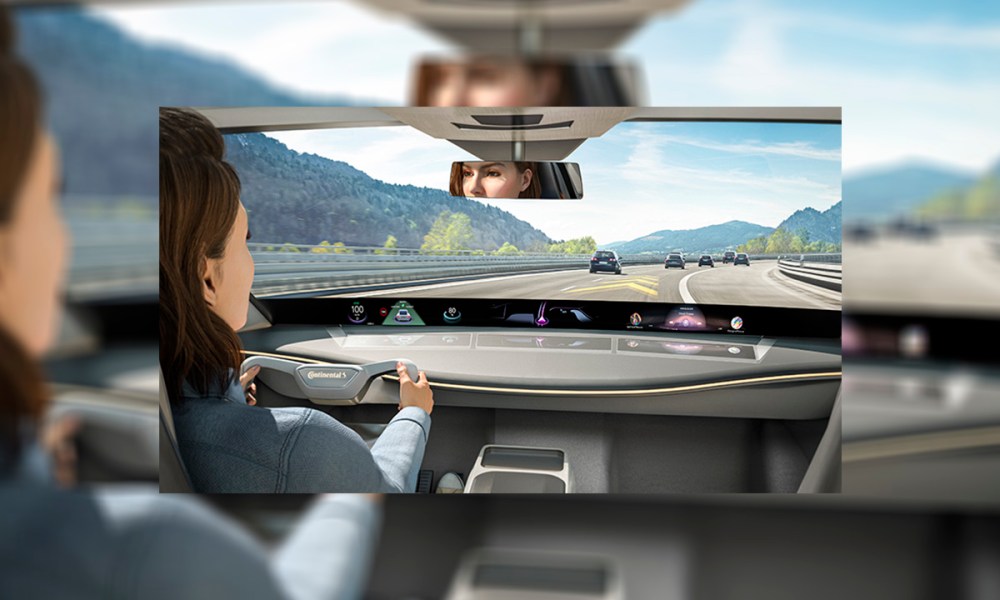Automotive HUD Market size is projected to grow from USD 1.0 billion in 2023 to USD 2.2 billion by 2028, at a CAGR of 16.6%, according to a new report by MarketsandMarkets . The demand for automotive HUD solutions is fueled by the increased focus towards passenger as well as vehicle safety, a growing demand for improvement of in-vehicle experience, and steady growth in high-end vehicle segments, mainly in emerging markets.
. The demand for automotive HUD solutions is fueled by the increased focus towards passenger as well as vehicle safety, a growing demand for improvement of in-vehicle experience, and steady growth in high-end vehicle segments, mainly in emerging markets.
Download PDF Brochure: https://www.marketsandmarkets.com/pdfdownloadNew.asp?id=11272971
Browse in-depth TOC on “Automotive HUD Market“.
242 – Tables
74 – Figures
264 – Pages
Automotive HUD Market Scope:
|
Report Coverage |
Details |
|
Market Size |
USD 2.2 billion by 2028 |
|
Growth Rate |
16.6% of CAGR |
|
Largest Market |
Asia Pacific |
|
Market Dynamics |
Drivers, Restraints, Opportunities & Challenges |
|
Forecast Period |
2023-2028 |
|
Forecast Units |
Value (USD Billion) |
|
Report Coverage |
Revenue Forecast, Competitive Landscape, Growth Factors, and Trends |
|
Segments Covered |
HUD Type, Technology, Dimension Type, Sales Channel, Level of Autonomy, Offering, Vehicle Type, Propulsion Type, Electric Vehicle Type, Passenger Car Class, and Region. |
|
Geographies Covered |
Asia Pacific, North America, Europe, and Rest of the World |
|
Report Highlights |
Updated financial information / product portfolio of players |
|
Key Market Opportunities |
Increasing demand for semi-autonomous vehicles |
|
Key Market Drivers |
Steady growth in demand for luxury and high-end segment cars, mainly in emerging markets |
BEV segment is expected to have largest share in the global automotive HUD market
The BEV segment is estimated to dominate the automotive HUD market based on electric vehicle type. Increasing sales of BEVs in China, the US, and European countries are driving the BEVs segment. Additionally, BEV manufacturers are increasingly adopting HUDs as a safety and convenience feature. For instance, the 2022 NIO ET7, NIO ES6, and NIO ES8, electric car models by NIO in China, have HUDs installed in them. As per industry experts, most of the BEV OEMs have started adopting HUD technology in their respective models. As such, the penetration rate of automotive HUDs in BEVs is increasing, which will, in turn, drive the BEV automotive HUD market during the forecast period.
3D HUD segment is expected to have significant growth opportunities in global automotive HUD market
The 3D HUD segment is anticipated to have significant growth opportunities during the forecast period. 3D HUD can easily integrate AR elements, which, in turn, creates a more immersive driving experience for the customers. AR features can include dynamic navigation overlays and virtual lane guidance and highlight potential hazards on the road, providing a comprehensive understanding of the driving environment. Several automotive HUD suppliers are focusing on augmented reality (AR) technology. Considering these parameters, the market for 3D HUDs is likely to witness significant growth in the near future.
‘Germany to lead the automotive HUD market in Europe‘
Germany accounted for the major share of the European automotive HUD industry in 2023. It houses the largest automotive industry in Europe. The German automotive industry is estimated to exhibit steady growth in the coming years. The German market is technologically advanced and has automobile manufacturing giants such as Volkswagen, BMW, Audi, and Daimler. The presence of major automobile manufacturers combined with advanced technology prowess would result in a significant rise in demand for advanced automotive technology such as HUD systems and components. In January 2023, Continental AG’s Scenic View Head-up Display (HUD) was presented at the CES 2023 and earned a CES Innovation Award in the Vehicle Tech & Advanced Mobility category for its leading-edge screen technology. This Scenic HUD is expected to be launched in the market by 2026. Such launches support the revenue growth of the automotive HUD market in Europe.
Inquire Before Buying: https://www.marketsandmarkets.com/Enquiry_Before_BuyingNew.asp?id=11272971
Key Market Players:
The automotive HUD companies are Nippon Seiki Co. Ltd. (Japan), Continental AG (Germany), DENSO Corporation (Japan), Panasonic Holdings Corporation (Japan), and Foryou Corporation (China), among others. These companies have adopted strategies of new product development, expansions, collaborations, partnerships, and acquisitions to gain traction in the market. Collaborations were the most adopted strategy, among others.
Recent Developments:
- In July 2023, Panasonic Automotive Systems Co., Ltd., a group of Panasonic Holdings Corporation, announced that its intelligent room mirror (electronic mirror) linked with a drive recorder and head-up display (HUD), have been adopted for the new Nissan Serena e-Power. The HUD linked with the mirror uses a 2-megapixel camera and a high-resolution display, as well as proprietary image processing technology, to achieve high-definition images and improved nighttime visibility.
- In February 2023, Huawei Technologies Co., Ltd. announced that Rising Auto, the NEV (New Energy Vehicle) brand of SAIC Motor Corporation Limited (SAIC Motor), will equip its R7 model with Huawei AR HUD (augmented reality head-up display). The innovative AR HUD launched by Huawei will provide R7 users with a smarter, safer, and more convenient mobility experience.
- In January 2023, Continental AG’s Scenic View Head-up Display (HUD) was presented at the CES 2023 and has earned a CES Innovation Award in the Vehicle Tech & Advanced Mobility category for its leading-edge screen technology. This HUD is expected to be launched in the market by 2026.
- In May 2022, Panasonic Automotive Systems Co., Ltd., a group of Panasonic Holdings Corporation, announced that its 11.5-inch wind shield head-up display (WS HUD) has been adopted for Nissan Motor Co., Ltd.’s new Ariya crossover electric vehicle (EV). This is the sixth car model from Nissan to use the WS HUD of Panasonic, following the Skyline, Rogue, Qashqai, Pathfinder, and QX60.
- In October 2021, Nippon Seiki Co., Ltd. supplied its head-up display (HUD) to Geely Automobile’s Lynk & Co brand 09 SUV. The HUD to be installed is a windshield type that projects information such as speed, navigation, etc., onto the windshield of the vehicle.
Get 10% Free Customization on this Report: https://www.marketsandmarkets.com/requestCustomizationNew.asp?id=11272971
Browse Adjacent Market: Automotive and Transportation Market Research Reports & Consulting
Related Reports:
Automotive Camera Market – Global Forecast to 2028
ADAS Market – Global Forecast to 2030
Connected Car Market – Global Forecast to 2026
Automotive Digital Cockpit Market – Global Forecast to 2025



 . The demand for Advanced Driver Assistance Systems (ADAS) is increasing quickly due to the rise in traffic accidents on a global scale. To make driving safer and cut down on accidents, automakers are heavily investing in the development of these technologies. Customers are increasingly choosing vehicles with ADAS capabilities as they become more aware of the safety advantages of these systems. The need for ADAS is being further increased by governments drafting legislation to make such systems required in vehicles.
. The demand for Advanced Driver Assistance Systems (ADAS) is increasing quickly due to the rise in traffic accidents on a global scale. To make driving safer and cut down on accidents, automakers are heavily investing in the development of these technologies. Customers are increasingly choosing vehicles with ADAS capabilities as they become more aware of the safety advantages of these systems. The need for ADAS is being further increased by governments drafting legislation to make such systems required in vehicles.